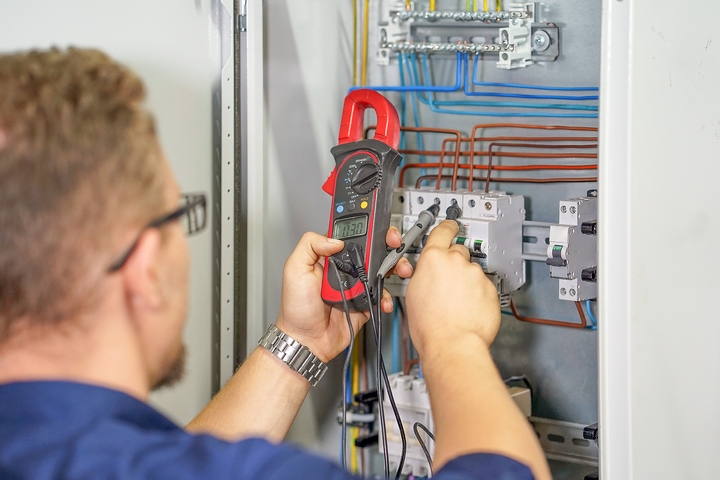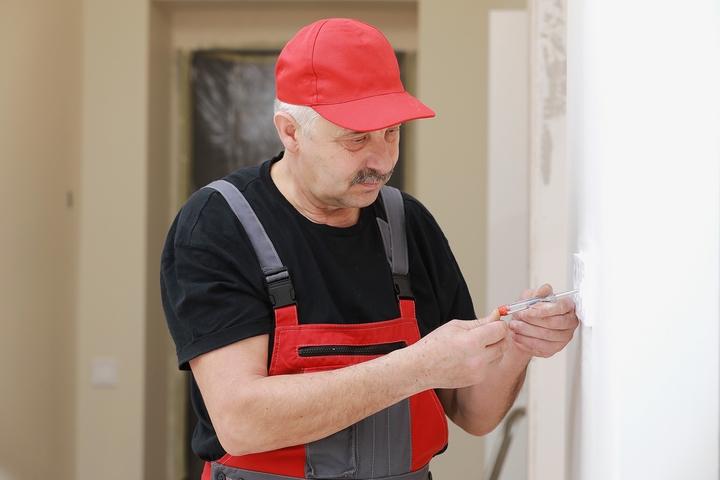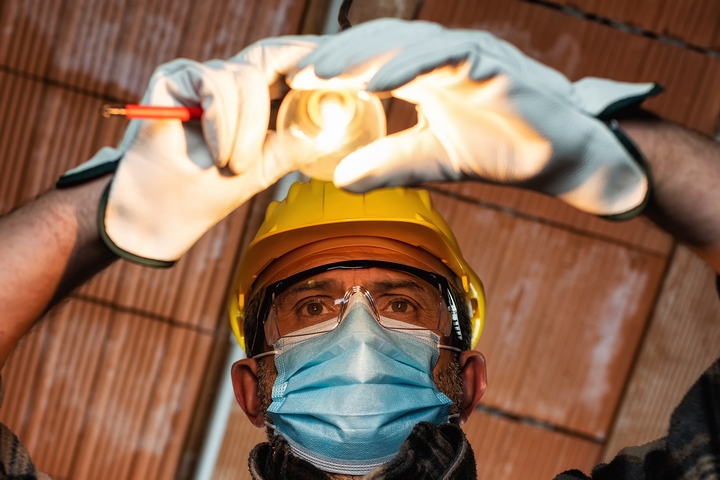Becoming an electrical tradesman is a great profession. As you work through an apprenticeship to becoming a journeyman, you learn skills that qualify you to work on residential, commercial, and industrial projects where you will be installing, repairing, and maintaining electrical components and systems.
It’s a great career to pursue and one that pays well. So what does a typical day look like for an electrician? There is no typical day really. On big commercial jobs, you might be running wires for weeks at a time or installing conduit and boxes. As Toronto electricians, the job varies day to day as you are called out to make installs and repairs.
Let’s look at a day in the life of an electrician:
Electrician Work Hours

A typical day in the life of an electrician start at 7 am and end around 3:30 pm with coffee and lunch breaks. Residential is different. Typically you will start at the shop to get orders for new jobs and pick up supplies. Work hours may start anywhere from 7-9 am depending on the company and your breaks will fit around your daily schedule. If you are visiting a few small jobs in a day your breaks could line up with your travel time between jobs.
Some jobs will just be for the day and may require you to stay late to finish your work or you could work extra hours in order to catch up on multi-day projects. If your company responds to emergencies 24 hrs a day you could be on call to work during off-hours like evenings and weeks ends.
Electrician Tasks

There is a set of common electrical services that electricians typically carry out for homeowners. While no two jobs are the same, basic wiring, electrical installations, and repairs are the main focus.
These common tasks that an electrician may do during the day include:
- Diagnosing wiring problems
- Testing electrical systems with various tools like ohmmeters, voltmeters, or oscilloscopes
- Inspecting equipment for hazards and defects
- Repair wiring and electrical components
- Connecting wiring to components, circuit breakers, and transformers
For larger jobs and new installations, an electrician must also be able to read plans and blueprints and strictly follow safety and building codes.
Electrician Troubleshooting

With home electrical services, you are walking into a problem that needs to be addressed. You sometimes have to play detective in order to diagnose a problem and make sure the area is safe to work and live in.
Electrical work in general is not a job you rush and in an emergency call out, safety is paramount. Working with electricity is very dangerous and if there is a problem that you are called out to fix, proper safety protocols should be followed to ensure as you work you are not in danger.
Electrician Work Conditions

Most residential and commercial jobs are indoors for the bulk of the work. There are times when you need to work outdoors so you need to be prepared for all weather conditions including rain, snow, and sun.
You are working with your hands and because of the fine wiring and tool work, an electrician will not generally wear gloves. Most of the equipment you handle is new and clean and even in repair work, the wiring and components are not too messy. If any demolition is required, you may get dirty but that is all part of the job.
Commercial Electrician Jobs

When you are working on a large project like a school, hospital, airport, commercial building, or residential high-rise, you will probably be on the project for weeks or even months. The electrical work will start at the beginning of a project with temporary power and any piping needed to be installed within slabs and concrete wall as they are prepared to be poured. Most work though happens after walls are put up. This is the electrician’s domain.
Work typically starts at the “gang box” where you show up for a 7 am start and collect your tools and equipment. You may already know your work for the day as it could be a continuing of the previous day or moving room to room installing the same wiring and components.
Foremen and lead hands follow blueprints and direct you to specific tasks. A safety review is always recommended because of the dangerous equipment you are using on a daily basis.
10 am is usually coffee time for 10-15 minutes and lunch follows at noon for a 1/2 hr. Some companies skip afternoon coffee to go home early as well.
There is your typical day in the life of an electrician. Electrical work is not for the faint of heart. There is lots of problem solving and physical labour involved as well as a steep learning curve. It’s a rewarding job though and one you can be proud to work at.




